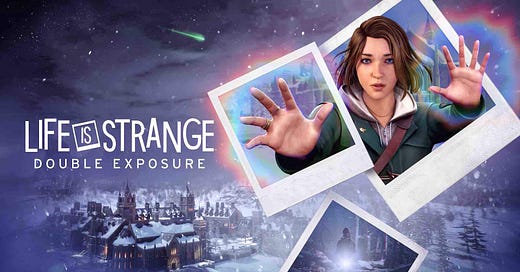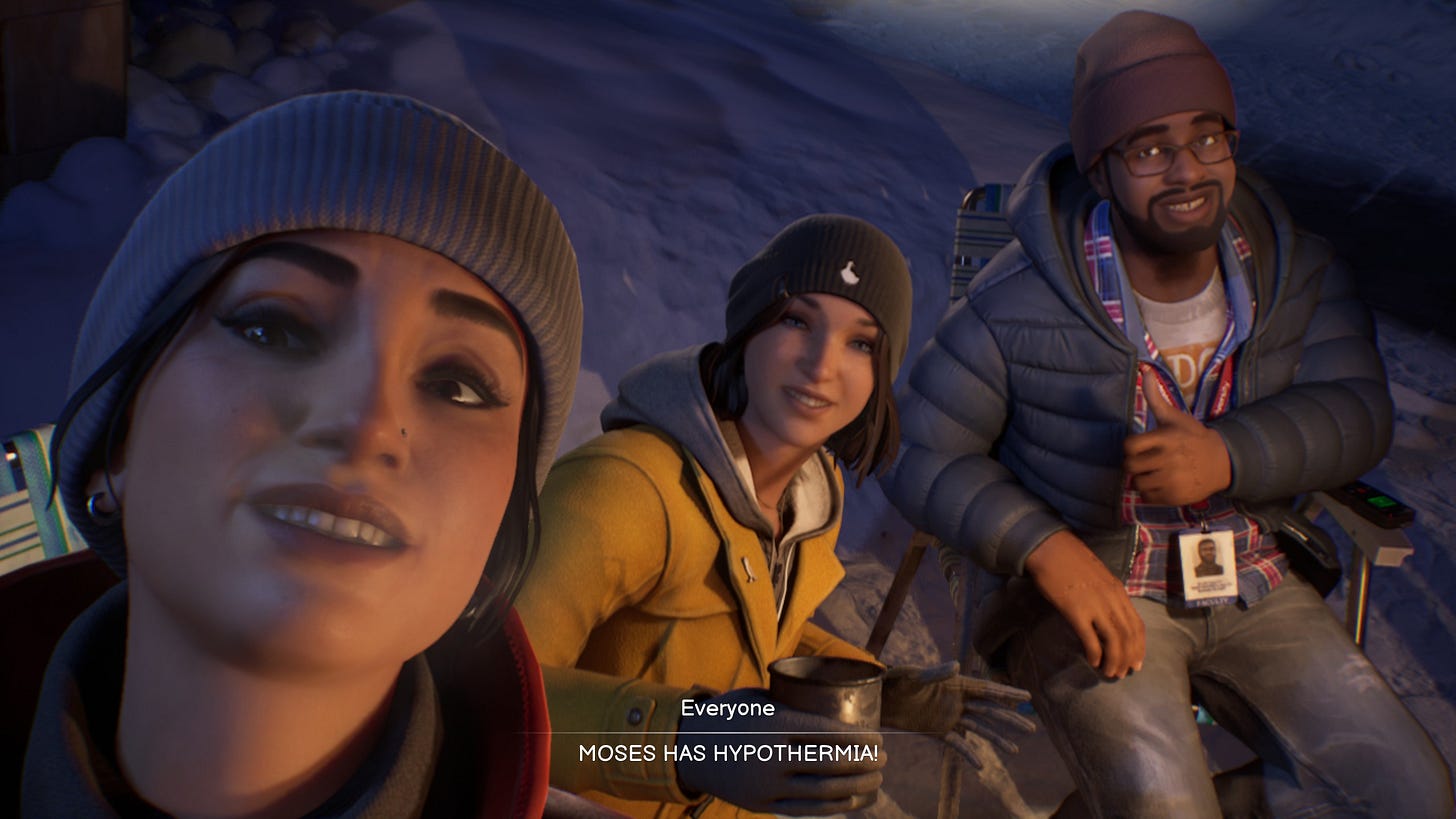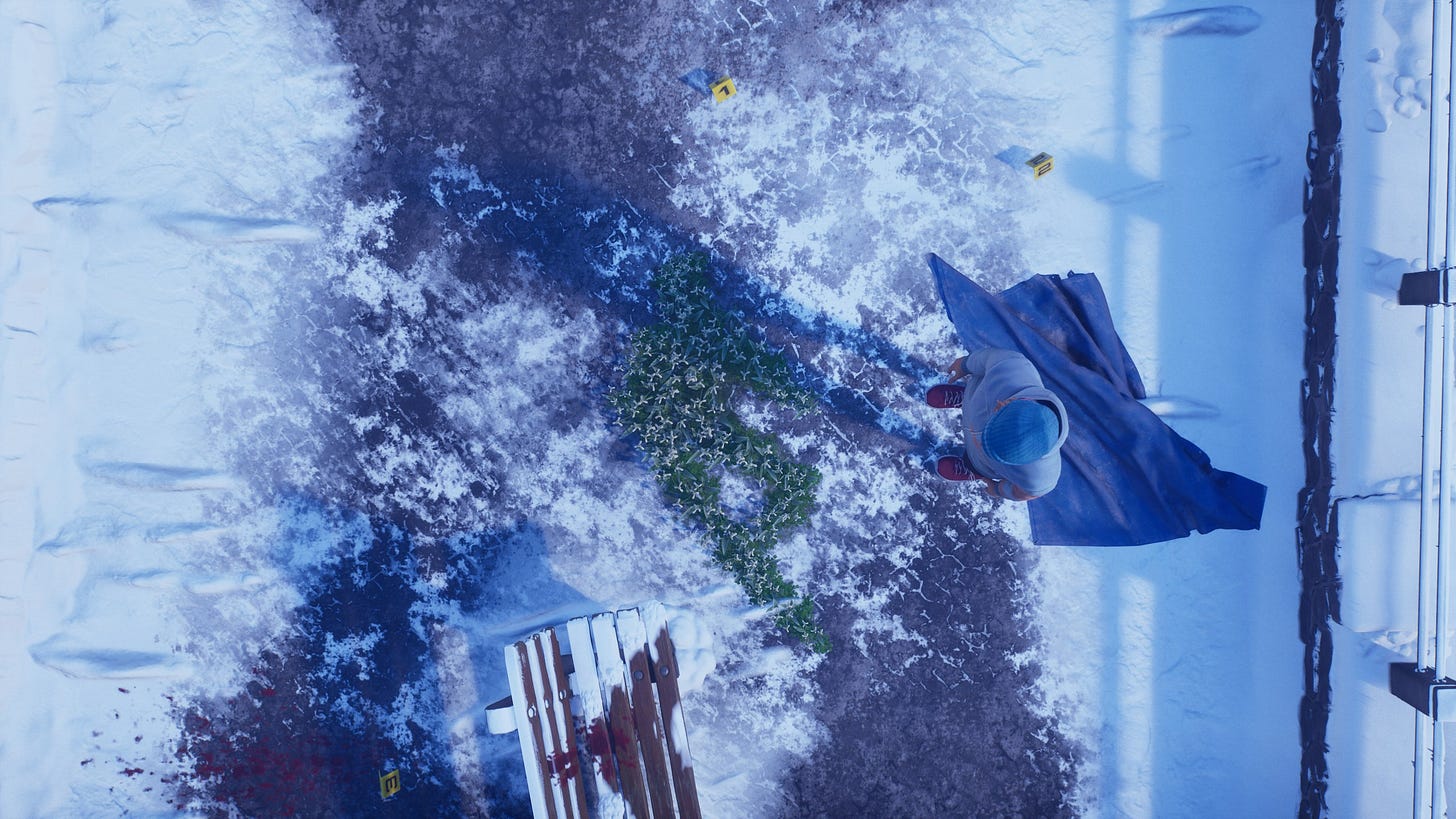Life is Strange: Double Exposure Needed More Time in the Darkroom
And it deserved more time as well.
Life is Strange: Double Exposure came out last October in between Metaphor: ReFantazio and Dragon Age: The Veilguard. Two games that I absolutely adored and took up all of my time for that month. Eventually though, I grabbed Double Exposure during a recent sale just because I adored the original game. It helped me process and move on with my transness. so, naturally, I wanted to see what came next for Max.
With that in mind, I had high hopes for the game while also trying to temper my expectations given the developers were not the original developers of the first game, and had made the personally disappointing True Colors that just didn't hook me. I went in with medium expectations and I can safely say that they were met...for the first 3 episodes. Eventually things started to fall apart and I started to feel like the devs didn't really know how to end the game either because they were on a time crunch or they had written themselves into a corner. Double Exposure is a really interesting sequel that really allows you to feel the pressure the devs were under from the Square Enix Execs to make a game quickly.
The Premise
In Life is Strange: Double Exposure you play as Max for the first time in almost a decade and get to see her go through a whole new murder mystery, but this time she can't rewind time. Instead, she can jump between two timelines, one where her best friend was murdered and one where she wasn't. The games opening hour or so lead into that murder and it has this truly wonderful lead in. Max exists in a college town where she is a resident Professor of Photography for some undergrads. Max is the same character people loved back in the day, but now with powers that are more confusing that before. Will we be able to solve the murder mystery with those powers?
The Good
Usually as I play a game I'm writing down the things I like and don't like in my document where I compose my articles. But, here I am, a bit after completing the game and before publishing this review, and I haven't written anything in the Good section and the Bad section is already done. This isn't to say the game doesn't have good qualities. Just that they don't necessarily jump out at you, the flaws jump out much more. It's a frustration felt through the entire game.
That said, the game still starts really damn well. It has a fun urban exploring element for the first little opening area and as someone who used to do that it was remarkably accurate to what it's like getting around abandoned places. It introduces you to the characters it needs to, to the ones that interest you and that allow us to see Max's gayness. It even allows you to pick what happened at the end of the original game in a simple choice between whether Chloe died at the end of the last game, or if her and Max just ended up traveling around and then breaking up. There are some truly amazing moments of characterization in these first couple of hours, even just the first two episodes. Going through Max's journal particularly showed the process of traveling with Chloe then the break up.
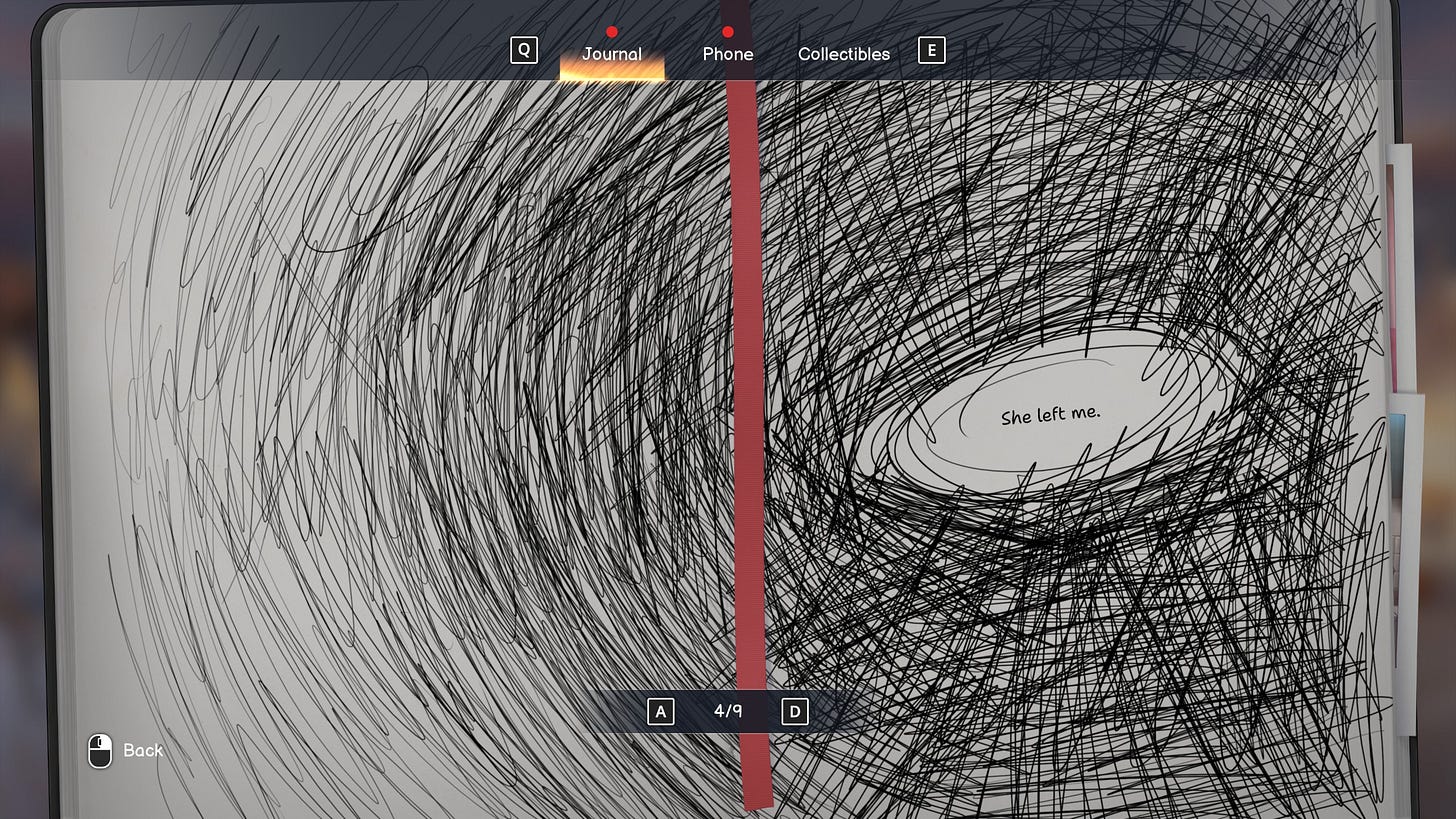
I think the main characters you get to know in this game are fucking fantastic and I felt interested in from the start. Seeing Max made new friends, that she found a way to succeed at her life both through doing her photography and through teaching was wonderful. Plus, getting to see an older, wiser, more mature Max was very cool to see.
The setting was also the perfect little place for us to see Max in. Existing in this little college town is the exact place I would have expected Max to end up. It had a small amount of areas just like the first game, so wasn't overwhelming in how large it was, which was something I experienced with Life is Strange: True Colors. It also took place in winter and I think that fit the story very well. In many games the setting is just kinda what the game exists in. It doesn't really serve the game at all, but in the best games the setting serves the story and the characters, and makes everything have more depth. Life is Strange: Double Exposure has the setting down.
There are some really wonderful shot in this game. The imagery, the framing, the color, the focus, it all drives the player to both be engaged in how things are being presented and also make them have even more questions. This is obviously my film school half coming out but if this game had a bit more time to push things to the next level, I think it would have matched just how wonderful the shot composition was.
The Bad
Double Exposure has this really interesting jumping off point. Being Max again and doing another murder mystery is really interesting, but while it felt like the first 3 episodes really served the main plot, episode 4 felt like the beginning of things getting...distracted. By the end of it you feel like you wasted most of the episode not pushing the plot forward. Instead, exploring in the Alive timeline, what was going on with Safi's old friend Maya and what the driver there was as opposed to, you know, solving the Murder of Safi. It felt like it just forgot what the story was about.
I think the swapping between timelines is an interesting idea with a very clunky execution. You have to go to specific "shift points" to be able to shift between timelines. Otherwise you can pulse to be able to see what is going on around where you are in the other timeline. I like the fact that I can pulse anywhere but it will often lead to just feeling I'm spamming my R1 button to be able to follow the person I'm supposed to follow. This happened multiple times during the game. Then when it comes to shifting, I didn't like having to go to points to shift. One of the greatest things about the original Life is Strange is that Max could rewind whenever. She didn't have to go to a specific spot to activate, just "oh shit I don't like that outcome of that conversation, rewind time!" which some criticized but I adored. I didn't have to go through the whole thing multiple times to get a conversation response I enjoy, or reloading a checkpoint. It was this really fun thing to fuck with the game and just was so well integrated to the gameplay. But here? I should be able to shift wherever the fuck I feel like it. I shouldn't have to wander around to find that shift point, just let me shift where I am right now. Sure this could mess with some things gameplay wise and since Max disappears in the timeline she's leaving I get that "why wouldn't someone around me see that I'm shifting" would be a thing people would criticize, but it would also just feel better to play. Feel and fun are what matters, sometimes that means things that don't inherently make sense.
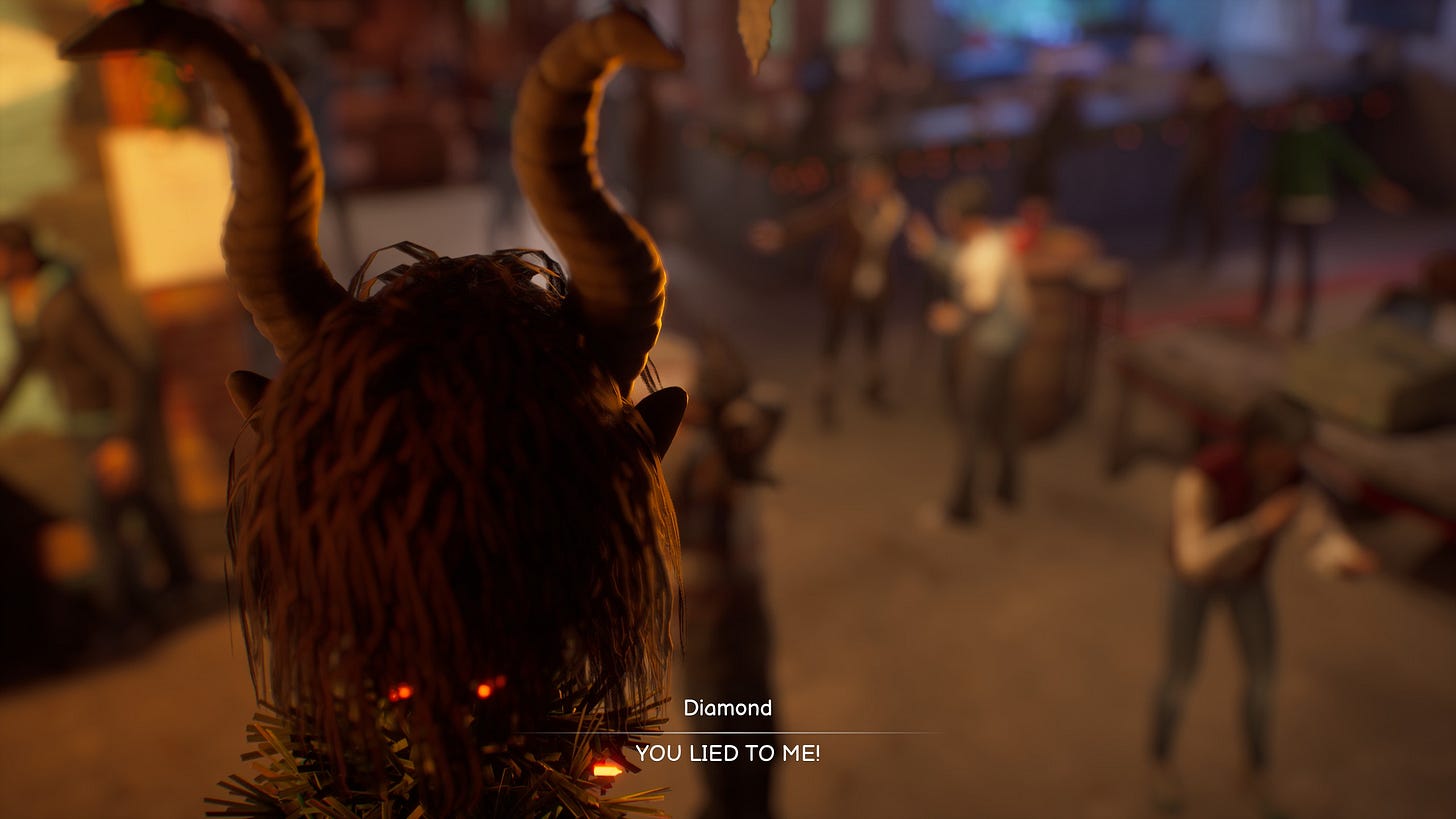
Like how in most Spider-Man games you're able to just swing around if there's a building near you, you don't get swung towards the building, you decide where you go. Mind, in the most recent game you can change it to make it more realistic. But it's more fun to suspend your disbelief for a second for better gameplay. This is what should have happened in Double Exposure. I'm honestly surprised no one on the team thought that it would be a better gameplay feel to be able to shift wherever, but I wasn't in the room, maybe some did. Who knows, and now some who were in the room are now laid off. So who knows. Regardless, this sucks and as the shifting is such a common thing you have to do, it impacts the games experience a fuck lot.
The Ending
Max refuses to make a choice between shooting Safi and the town being destroyed by the storm. So they both just go into the storm despite it having been rather far away before, but only after Safi started to have a power surge and just shifted between person to person rapidly..and then shot her mother. In the Storm Safi is split between many of the major characters of the story, and Max has to go around doing a Double Exposure to separate the bits of Safi from the characters.
The rest of the people who haven't been taken over by a part of Safi have had their memories of both timelines combined so they remember both of them. Anyway, eventually Safi and Max talk about what's going on, they realize the last bit of Safi is actually inside of Max. So Max Double Exposure's herself and boom, the storm is gone and the timelines are merged for good, everyone is fine. Well except Safi's mom, she got shot in the shoulder. Safi then decides shes going to go and look for more people with powers and you then get to make your last real decision of the game, say if you will "stand by" Safi when she comes back after discovering more people with powers.
Then cuts to 3 days later. You have little talks with the people who have mattered in the game, find out how they're doing, all that. Then the game ends after Max does this little speech saying "What's coming is going to be hard but we will do it together." Credits. Post Credits you get a small scene with Safi seeing Diamond, a character you've come to know over the course of the game, get a nose bleed. Just like Safi and Max gets. Then gives a very Marvel style Nick Fury thing "come with me and find out some answers".
The ending was...underwhelming. We never really found out why there was a Max that set this whole thing off when she shot Safi, something that is revealed in the picture from the end of Episode 2 and was a really interesting plot development, the picture didn't happen to have a storm in the background and was from a different perspective than the image that eventually gets shot later on in the story. It feels like they kinda forgot that that Max was the whole problem and why did she do that for the first time. It didn't make sense and just made me feel like the standard time travel thing with a paradox of the whole instigating issue.
The Original Life is Strange didn't have that paradox problem, but this one fails in that regard and then to have the ending just kinda end with a lead in to some kind of sequel, one that only seems to have one instigating force, Safi coming back with more people with powers. Which is interesting, but not exactly something that makes me want to know what happens next. While the original game left me desperately wanting to see what happened after the credits rolled and Chloe was saved because I couldn't let her die. I'm a weakling who loves punk lesbians.
The Conclusion
Listen, I wanted to like Life is Strange: Double Exposure. It has such a wonderful jumping off point, leads into some really interesting areas for the first 3 episodes, but then falls apart in the next 2 episodes. Definitely gave the feeling that Square was insisting that Deck nine really, really needed to get it out for last fall and if that means they had to have the ending feel disappointing and frustrating, so be it. Now with so much of the devs being laid off, who knows if this story will even get the conclusion they are leading to.

Double Exposure is something you should only play if you really, really want to play another Life is Strange game with Max as the lead instead of people that have never quite met the wonderful wit and personality that Max has. But if you're expecting something just as good as the first game, something that feels like a game that wasn't made episodically, despite still having that structure, you're going to be disappointed. If you're looking for the story to not have holes in it and feel like the final decision doesn't really have much of an impact, you're going to be disappointed. If anything, this game has made me desperately want to play Lost Records: Bloom and Rage as that is made by DON'T NOD and they're typically pretty damn good at what they do. Deck Nine is a wonderful developer, I just think Life is Strange: Double Exposure needed more time in the oven and not to be a game that they were expecting a sequel for.
Meow,
Cat

